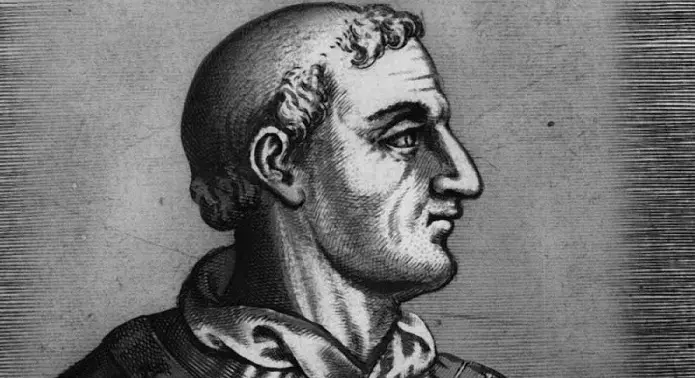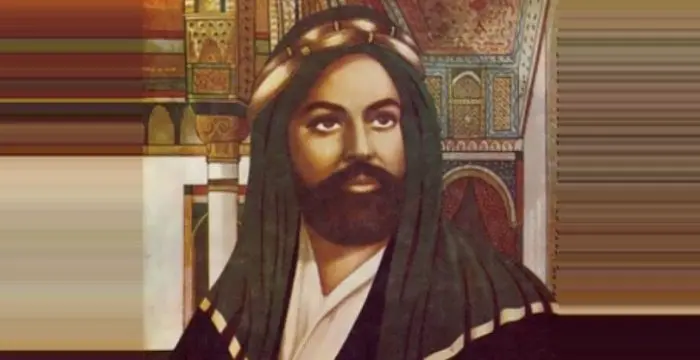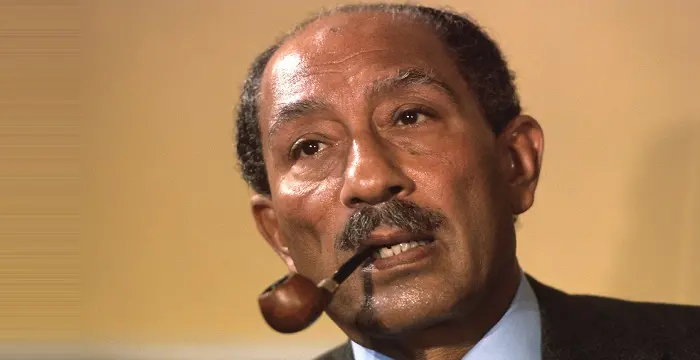
Pope Gregory VII - Spiritual, Facts and Family
Pope Gregory VII's Personal Details
Pope Gregory VII was the pope from 1073 to 1085
| Information | Detail |
|---|---|
| Birthday | 1020 |
| Died on | May 25, 1085 |
| Nationality | Italian |
| Famous | Leaders, Spiritual & Religious Leaders, Religious Leaders, Spiritual |
| Known as | Hildebrand of Soana |
| Birth Place | Sovana |
| Religion | Catholicism |
| Gender | Male |
| Born in | Sovana |
| Famous as | Religious Leader |
| Died at Age | 65 |
// Famous Religious Leaders
Prophet Muhammad
Prophet Muhammad was the founder of Islam, one of the most widespread religions in the world. This biography profiles his childhood, life story, achievements and more.
Murad IV
Murad IV was one of the mighty Sultans in the history of the Ottoman Empire. This biography profiles his childhood, family, accession, rule, administration and timeline.
Eckhart Tolle
Eckhart Tolle is a well-known spiritual leader, and author. Check out this biography to know about his childhood, family, personal life, spiritual awakening, etc.
Pope Gregory VII's photo
Who is Pope Gregory VII?
Pope Gregory VII was the pope from 1073 to 1085. Counted amongst the greatest of medieval popes, he was beatified by Pope Gregory XIII in 1584 and canonized in 1728 by Pope Benedict XIII. He is best remembered for the part he played in the Investiture Controversy and the reforms he proposed which later became known as the Gregorian Reforms. Following his dispute with Henry IV, Holy Roman Emperor, he was successful in deposing Henry, becoming the first pope to depose a crowned ruler. This revolutionary act affirmed the primacy of papal authority and led to the establishment of the new canon law governing the election of the pope by the College of Cardinals. Born as Hildebrand Bonizi into a family of humble origins, he became interested in religion at a young age and received his education from his uncle who was abbot of a monastery on the Aventine Hill. He went on to become the deacon and papal administrator during the papacy of Pope Leo IX and greatly strengthened his position within the church over the following years. By the time Pope Alexander II became the head of the church, Hildebrand had consolidated his position as a very powerful religious figure. Pope Alexander II died in 1073 and Hildebrand succeeded him as Pope Gregory VII.
// Famous Spiritual
Prophet Muhammad
Prophet Muhammad was the founder of Islam, one of the most widespread religions in the world. This biography profiles his childhood, life story, achievements and more.
Murad IV
Murad IV was one of the mighty Sultans in the history of the Ottoman Empire. This biography profiles his childhood, family, accession, rule, administration and timeline.
Eckhart Tolle
Eckhart Tolle is a well-known spiritual leader, and author. Check out this biography to know about his childhood, family, personal life, spiritual awakening, etc.
Childhood & Early Life
He was born as Hildebrand Bonizi c. 1020 in Sovana, in the county of Grosseto, now southern Tuscany, central Italy. The details regarding his early life and family are obscure. While some sources state that his family was of humble origins, others claim that he hailed from an upper-middle-class family.
As a youth he went to Rome to study. It is believed that his uncle was abbot of a monastery on the Aventine Hill. He received his education from several prominent figures such as Archbishop Lawrence (Laurentius) of Amalfi, who was famed for his knowledge of both Greek and Latin, and Johannes Gratianus, the future Pope Gregory VI.
Pope Gregory VI was deposed by Holy Roman Emperor Henry III in 1046 and exiled to Cologne, Germany. Hildebrand followed him in exile. He continued his studies at Cologne and returned to Rome in early 1049 accompanied by Bruno of Toul after the death of Gregory VI.
Later Years
Bruno of Toul became Pope Leo IX in 1049 and named Hildebrand as deacon and papal administrator. This marked the beginning of his long and successful religious career. For the next 24 years Hildebrand served Pope Leo IX and his four successors. During this period he went on legatine missions in Italy, France, and Germany, and played a vital role in the formulation and implementation of papal policy.
By the early 1060s, he had become one of the most powerful figures in the papal administration and a prominent papal adviser. He played a major role in the election of Anselm of Lucca the Elder as Pope Alexander II in the papal election of October 1061. During Pope Alexander II’s tenure Hildebrand played an instrumental role in the reconciliation with the Norman kingdom of southern Italy.
Hildebrand rose to such a significant position in the papal administration that there was no doubt that he would one day succeed Pope Alexander II. When Alexander II died in 1073, Roman citizens and clergy raised Hildebrand to the papacy. Hildebrand took the name Gregory in memory of Gregory I.
As the pope he became deeply involved in the reform of the Church. He was of the belief that Church was founded by God and is thus a divine institution. It was his conviction that as the pope and the head of the Church, he was the vice-regent of God on earth. He went on claim that disobedience to him implied disobedience to God: or, in other words, a defection from Christianity.
The pope’s convictions led him to conflict with the rulers of the European kingdoms as his insistence on the elimination of secular influence threatened the very existence of the kingdoms. The pope’s attempts to establish the supremacy of the Church led to bitter tension between Henry IV, Holy Roman Emperor and the Church.
The clash between the Roman Empire and the Church precipitated the onset of Investiture Controversy or Investiture Contest. The major issue of the conflict was whether it should be the pope or the monarch who would name (invest) powerful local church officials such as bishops of cities and abbots of monasteries.
During this long drawn and acrimonious struggle, Pope Gregory VII excommunicated Henry IV on three occasions and extended his support towards a rival claimant to the throne, Rudolf. In retaliation, Henry IV sought the pope’s dismissal and favored the election of an antipope, Clement II. Ultimately, Henry IV was able to recover his throne and Gregory went into exile to the castle of Salerno by the sea.
Major Works
Pope Gregory VII is best remembered for his role in the Investiture Controversy, which was the most significant conflict between Church and state in medieval Europe. The controversy which began as a power struggle between Gregory VII and Holy Roman Emperor Henry IV, ultimately ended in 1122 when Emperor Henry V and Pope Calixtus II agreed on the Concordat of Worms.
He initiated a series of reforms which later became known as the Gregorian Reforms. These reforms primarily dealt with the moral integrity and independence of the clergy, including the enforcement of the Western Church's ancient policy of celibacy for the clergy.
Personal Life & Legacy
Pope Gregory VII died in exile in Salerno on 25 May 1085. Centuries after his death, he was beatified by Pope Gregory XIII in 1584 and canonized in 1728 by Pope Benedict XIII.
// Famous Spiritual & Religious Leaders
Swami Vivekananda
Swami Vivekananda was the chief disciple of Sri Ramakrishna, and was responsible for awakening India spiritually. Check this biography to know in detail about his life, profile and timeline.
Prophet Muhammad
Prophet Muhammad was the founder of Islam, one of the most widespread religions in the world. This biography profiles his childhood, life story, achievements and more.
Murad IV
Murad IV was one of the mighty Sultans in the history of the Ottoman Empire. This biography profiles his childhood, family, accession, rule, administration and timeline.
Pope Gregory VII biography timelines
- // 1020He was born as Hildebrand Bonizi c. 1020 in Sovana, in the county of Grosseto, now southern Tuscany, central Italy. The details regarding his early life and family are obscure. While some sources state that his family was of humble origins, others claim that he hailed from an upper-middle-class family.
- // 1046 To 1049Pope Gregory VI was deposed by Holy Roman Emperor Henry III in 1046 and exiled to Cologne, Germany. Hildebrand followed him in exile. He continued his studies at Cologne and returned to Rome in early 1049 accompanied by Bruno of Toul after the death of Gregory VI.
- // 1049Bruno of Toul became Pope Leo IX in 1049 and named Hildebrand as deacon and papal administrator. This marked the beginning of his long and successful religious career. For the next 24 years Hildebrand served Pope Leo IX and his four successors. During this period he went on legatine missions in Italy, France, and Germany, and played a vital role in the formulation and implementation of papal policy.
- // Oct 1061By the early 1060s, he had become one of the most powerful figures in the papal administration and a prominent papal adviser. He played a major role in the election of Anselm of Lucca the Elder as Pope Alexander II in the papal election of October 1061. During Pope Alexander II’s tenure Hildebrand played an instrumental role in the reconciliation with the Norman kingdom of southern Italy.
- // 1073Hildebrand rose to such a significant position in the papal administration that there was no doubt that he would one day succeed Pope Alexander II. When Alexander II died in 1073, Roman citizens and clergy raised Hildebrand to the papacy. Hildebrand took the name Gregory in memory of Gregory I.
- // 1122Pope Gregory VII is best remembered for his role in the Investiture Controversy, which was the most significant conflict between Church and state in medieval Europe. The controversy which began as a power struggle between Gregory VII and Holy Roman Emperor Henry IV, ultimately ended in 1122 when Emperor Henry V and Pope Calixtus II agreed on the Concordat of Worms.
// Famous Leaders
Edi Rama
Edi Rama is the current Prime Minister of Albania. Check out this biography to know about his childhood, life, achievements, works & timeline.
Tecumseh
Tecumseh was a Native American leader of the Shawnee clan. This biography profiles his childhood, life and timeline.
Khalifa bin Zayed Al Nahyan
Sheikh Khalifa bin Zayed Al Nahyan is the current President of the United Arab Emirates (UAE). Check out this biography to know about his birthday, childhood, family life, achievements and fun facts about him.
Anwar Sadat
Anwar Sadat was the third President of Egypt and has been awarded the Nobel Prize for his peace initiatives. To know more about his childhood, career, profile and timeline read on the following biography.
Leo Varadkar
Cam Leo Varadkar is the current Taoiseach—the Prime Minister—of the Republic of Ireland. Check out this biography to know about his childhood, family life, achievements and other facts about his life.
Swami Vivekananda
Swami Vivekananda was the chief disciple of Sri Ramakrishna, and was responsible for awakening India spiritually. Check this biography to know in detail about his life, profile and timeline.
Pope Gregory VII's FAQ
When was Pope Gregory VII died?
Pope Gregory VII was died at 1085-05-25
Where was Pope Gregory VII died?
Pope Gregory VII was died in Salerno
Which age was Pope Gregory VII died?
Pope Gregory VII was died at age 65
Where is Pope Gregory VII's birth place?
Pope Gregory VII was born in Sovana
What is Pope Gregory VII nationalities?
Pope Gregory VII's nationalities is Italian
What is Pope Gregory VII's religion?
Pope Gregory VII's religion is Catholicism
How famous is Pope Gregory VII?
Pope Gregory VII is famouse as Religious Leader










